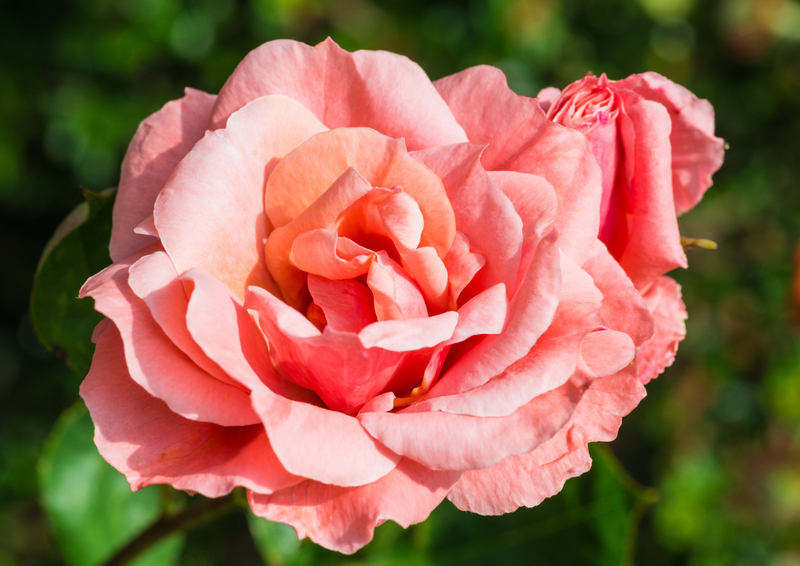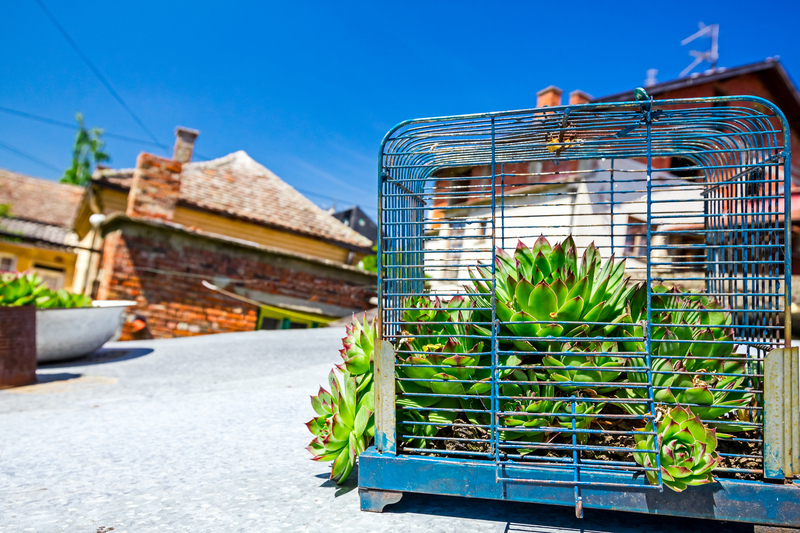Container Gardening: Bringing Nature to Your Doorstep
Posted on 29/08/2025
Container Gardening: Bringing Nature to Your Doorstep
Container gardening has become a dynamic solution for modern gardeners eager to cultivate beauty, flavor, and tranquility right at their doorstep. Whether you are living in an urban apartment, have limited yard space, or simply want to add creative flair to your outdoor (or indoor) environment, container gardens bring nature closer and make gardening accessible to everyone. This comprehensive guide will explore the many aspects of container gardening and provide all the tips you need to start your horticultural adventure today.
What Is Container Gardening?
Container gardening refers to the practice of growing plants exclusively in containers rather than in the ground. These containers can include pots, tubs, boxes, barrels, hanging baskets, or any vessel that holds soil. Thanks to its versatility, container planting is ideal for balconies, patios, porches, windowsills, rooftops, and even indoor spaces.
Why Choose Container Gardening?
- Space-Saving: Perfect for urban dwellers or people with small balconies and patios.
- Flexibility: Easily move containers for optimal sunlight or rearrange to refresh your space.
- Easy Maintenance: Containers minimize weeds, reduce soil-borne pests, and are simpler to water and fertilize.
- Creative Potential: Mix and match colors, textures, and plant types for visually stunning arrangements.
- Accessibility: Gardening at waist height is easier for people with mobility issues.

Choosing the Right Containers for Your Garden
When it comes to doorstep gardening, the choice of container can make or break your project. Different materials, sizes, and styles directly influence plant growth and garden aesthetics.
Popular Container Types
- Clay or Terracotta: Classic natural look; porous for good drainage; heavy (less likely to tip over).
- Plastic: Lightweight, cost-effective, and available in many colors and shapes. Retains moisture well but may overheat in strong sun.
- Ceramic: Glazed options are stylish and water-retentive; often used for ornamentals.
- Wood: Rustic appearance, good insulation for roots, but needs lining to prevent rot.
- Metal: Modern look; conducts heat easily, so consider lining or choosing shady spots.
- Hanging Baskets: Perfect for trailing plants and maximizing vertical space.
Container Size and Drainage
Choose containers large enough for root development--small pots dry out quickly and can stunt plant growth. Most importantly, ensure containers have drainage holes to prevent water accumulation, which can harm roots and cause disease.
The Best Soil for Container Gardening
Unlike in-ground gardens, containers require a special soil mix. Avoid using ordinary garden soil, which compacts easily and drains poorly in pots. The best option is a potting mix specifically designed for containers.
Potting Mix Ingredients
- Peat Moss or Coconut Coir: Retains moisture and provides organic matter.
- Vermiculite or Perlite: Improves drainage and aeration.
- Compost: Supplies vital nutrients for healthy plant growth.
- Slow-Release Fertilizer: Optional for ongoing nourishment.
Some specialty potting mixes are tailored for specific plants--like orchids, succulents, or acid-loving species. Choose according to your plant selection for the best results.
Selecting Plants for Your Container Garden
Your container garden can showcase virtually any plant, but some varieties thrive especially well in pots. Consider your local climate, sunlight availability, and personal preferences when making your selection.
Top Choices for Thriving Container Gardens
- Herbs: Basil, parsley, thyme, chives, mint, and oregano are perfect for pots and offer fresh flavors for your kitchen.
- Vegetables: Tomatoes, peppers, lettuce, radishes, and dwarf varieties of carrots and beans do well in containers.
- Flowers: Petunias, geraniums, pansies, marigolds, and begonias provide vibrant color throughout the season.
- Succulents and Cacti: Require minimal maintenance and are ideal for sunny windows or tabletops.
- Shrubs and Small Trees: Dwarf citrus trees, boxwoods, and topiaries add structure and height to patios and doorsteps.
Matching Plants to Containers
Consider plant size, root depth, and habit when selecting both the plants and the containers. For example, tomatoes need deeper pots than lettuce. Mixing plants with similar light, water, and soil needs in a single container ensures balanced, healthy growth.
Design Tips for Stunning Container Gardens
An attractive container garden at your doorstep begins with thoughtful design. The "thriller, filler, spiller" formula is a time-tested technique for creating lush, inviting arrangements:
- Thriller: Tall, upright plants (like ornamental grasses or spikes) provide height and drama.
- Filler: Mounding or bushy plants (such as petunias, geraniums, or leafy greens) fill out the middle layer.
- Spiller: Trailing plants (like sweet potato vine, ivy, or creeping jenny) cascade over the edge of the container.
Choose plants with contrasting colors, leaf textures, and shapes for visual interest. Don't be afraid to experiment--container gardening is a flexible, forgiving art!
Planting and Caring for Your Container Garden
How to Pot Your Plants
- Prepare the Container: Clean thoroughly, ensure drainage holes are open, and add a layer of gravel if desired to improve drainage.
- Fill with Potting Mix: Leave some space at the top for watering.
- Arrange Your Plants: Position "thrillers" in the center or back, "fillers" around them, and "spillers" near the edges.
- Plant and Pat Down: Gently remove plants from their nursery pots, loosen roots, and place them at the correct depth. Pat the soil to remove air pockets.
- Water Thoroughly: Give your newly planted container a deep drink so roots can settle in.
Watering and Fertilizing
Water is the most critical factor in container gardening. Containers dry out far faster than in-ground gardens, so monitor moisture daily, especially during hot weather. Water until you see it begin to drain from the bottom. Self-watering pots can help maintain even moisture, particularly if you're busy or traveling.
Fertilizing is also vital since nutrients leach from pots with frequent watering. Use a slow-release fertilizer at planting or feed plants with a diluted liquid fertilizer every few weeks, following the product's instructions.
Best Locations for Container Gardens
Container gardening at your doorstep is about making the most of your available space. Consider these popular spots:
- Balconies: Use railing planters, wall-mounted pots, or vertical gardens to maximize small areas.
- Front Steps: Line your entryway with colorful blooms or aromatic herbs to welcome guests.
- Patios & Decks: Create outdoor "rooms" with groups of containers bearing different heights, leaf colors, and textures.
- Windowsills: Grow handy kitchen herbs or cheerful flowers within arm's reach indoors or out.
- Rooftops: Install containers or raised beds for a unique sky-high garden retreat (ensure load-bearing capacity).
Seasonal Container Gardening Tips
Container gardening offers the flexibility to adapt with the seasons. Switch out plantings for year-round interest and maximum enjoyment.
Spring & Summer
- Fill containers with annuals, herbs, and quick-growing vegetables.
- Water often as the weather warms and replenish mulch to conserve moisture.
- Pinch or deadhead spent flowers and harvest vegetables regularly to encourage more growth.
Fall
- Transition to autumn flowers like mums or ornamental cabbages.
- Swap warm-season veggies for cold-tolerant greens like kale and spinach.
- Decorate with pumpkins, gourds, and seasonal branches for festive flair.
Winter
- Replace tender plants with evergreens, decorative twigs, or hardy perennials.
- Group containers together for protection and insulate with burlap or bubble wrap in colder climates.
- Continue watering during dry winter spells, as roots can dehydrate even in cold weather.
Common Challenges in Container Gardening and Solutions
Like any gardening method, container gardening comes with challenges. Fortunately, most problems can be easily addressed:
- Overwatering: Avoid by using well-draining mix and containers with drainage holes.
- Underwatering: Check soil moisture daily; mulching can help slow evaporation.
- Pests: Inspect plants regularly and use organic treatments if needed (like neem oil or insecticidal soap).
- Nutrient Deficiency: Feed regularly and add compost or slow-release fertilizer as needed.
- Sunburned Plants: Move containers to shadier areas during extreme heat, or use shade cloths for protection.
Sustainability and Eco-Friendly Practices in Container Gardening
You can make your container garden even more environmentally friendly by adopting sustainable practices:
- Reuse and Repurpose: Use recycled containers or repurpose items like old buckets, baskets, or drawers as planters.
- Choose Organic Soils and Fertilizers: Minimize the use of synthetic chemicals for healthier plants and safer food crops.
- Harvest Rainwater: Collect and use rain for watering your containers, reducing strain on municipal supplies.
- Compost: Incorporate home compost to enrich your soil mix and reduce kitchen waste.
Benefits Beyond Beauty: Why Grow a Container Garden?
Container gardening isn't just about aesthetics--it offers a multitude of practical and emotional benefits:
- Stress Relief: Tending plants has been shown to lower stress and improve mental well-being.
- Access to Fresh Produce: Grow herbs and vegetables you can harvest daily for healthier meals.
- Improved Air Quality: Many indoor plants absorb toxins and release oxygen, making your home fresher and healthier.
- Pollinator Attraction: Outdoor containers with bright, nectar-rich flowers help support bees and butterflies.
- Community Connection: Container gardens on stoops and balconies contribute to neighborhood beauty and interaction.

Frequently Asked Questions About Container Gardening
1. What are the best plants for beginners?
Start with easy-care plants like herbs (basil, mint, chives), succulents, petunias, or marigolds. These generally withstand slight drought and adapt well to containers.
2. Can I leave my containers outside year-round?
It depends on your climate and container material. In mild climates, many plants survive the winter outdoors, but fragile containers (like terracotta) may crack from freezing. Consider moving pots inside during harsh weather or choosing frost-resistant materials.
3. How often should I water my container plants?
Frequency varies with weather, plant type, and container size. Check soil moisture daily in hot weather and water thoroughly when the top inch feels dry.
4. Do I need to feed my container plants?
Yes, because nutrients leach out with watering. Use slow-release granular fertilizer at planting or supplement every 2-4 weeks with a liquid feed suited to your plant type.
5. Can I grow trees or shrubs in containers?
Absolutely! Choose dwarf or slow-growing varieties, and use large, strong containers to accommodate roots. Regular pruning helps maintain manageable size and health.
Conclusion: Start Your Own Container Garden Today
With the right know-how and a touch of creativity, container gardening offers an enriching way to bring nature to your doorstep. It's adaptable, accessible, and rewarding--whether you aim to grow fresh produce, stunning blooms, or simply a little patch of green for peace and joy. Experiment with different plants, containers, and locations; embrace the flexibility and beauty of this gardening style. Your home, health, and spirit will all benefit as you watch your personalized garden flourish, one container at a time.
Ready to get started? Grab your favorite pot, pick your plants, and bring nature to your doorstep--the world of container gardening awaits!

